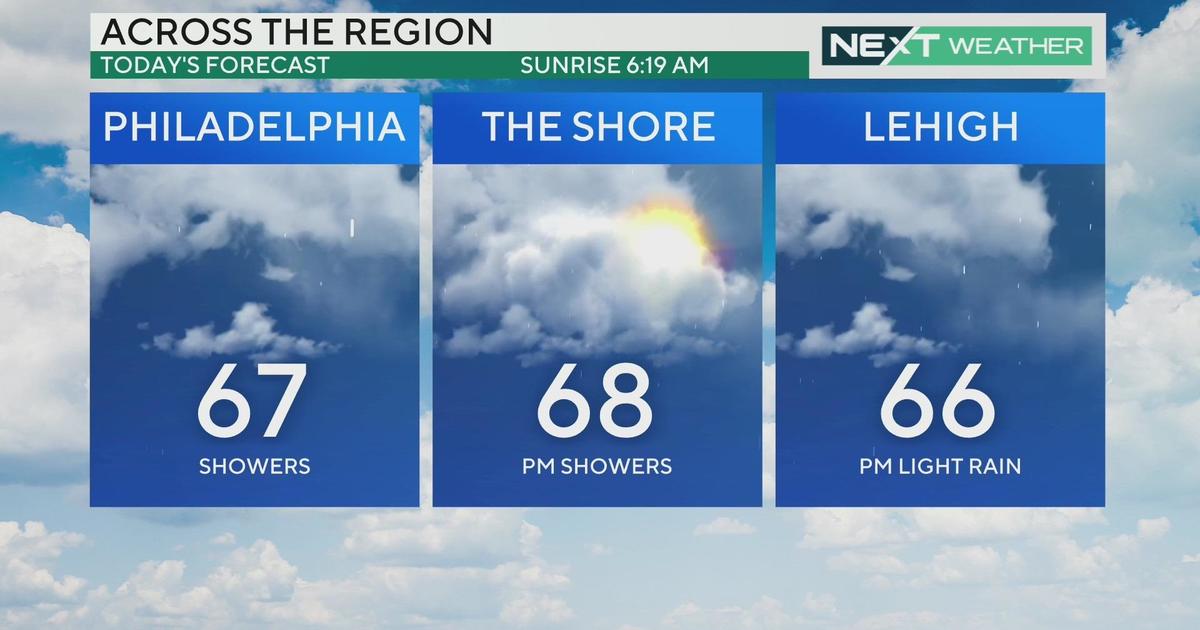Nor'Easter Could Bring Heavy Snow To Northeast Next Week
PHILADELPHIA (CBS)--Today's storm panned out pretty much as forecasted, with some over performance in the north and west suburbs thanks to intense banding that rolled through late morning.
In the city, the official total was 1.0", but hardly any of that stuck around for long due to the warm ground. Just north and west, elevation helped get us to around 3-4" with as much as 6" in the Poconos. And we may have an even more powerful system to track headed into next week.
But first, a brutally cold weekend for March. Temperatures will likely stay around the freezing mark for highs both Saturday and Sunday, with gusty winds causing it to feel like no better than the low 20's. Early Saturday morning, wind chill values will be in the single digits. The weekend looks dry, with some sunshine both days, and that cool dry pattern continues into Monday.
ANOTHER STORM?
Monday night into Tuesday, things get interesting. Two pieces of energy (one from the NW, another from the south) will attempt to phase just off the eastern seaboard, undergo rapid strengthening and throw lots of moisture back into a fresh arctic air mass across the Northeast. This is a pretty classic setup for a nor'easter but this particular pattern, owing to multiple streams converging at once, is a complicated one. Owing to pretty solid model consensus even 4+ days out, confidence is high that a large storm will occur. The questions to nail down concern the timing of the phase and the track of the eventual storm. This will play a large role in determining just how much snow we could see in our area.
Just for fun, of the current model tracks as of Friday night, the NAM is furthest west, bringing mainly rain to Philadelphia and suburbs and very heavy snow to central PA.
The GFS is east of the NAM, bringing rain to the coast, a mix to the city, and heavy snow totals in the north and western suburbs.
Then we have the European, which is generally regarded as the most accurate computer model, with a track just offshore, keeping the precipitation in the form of snow for our entire area with around a foot possible.
And lastly, the Canadian is furthest east, with the heaviest snow (around 6") at the coast and not as much accumulation inland.
As you can see, it only takes a track shift of 50-100 miles to make a huge difference in where and how heavily the snow falls, and we are still too far ahead of the storm to make a determination.
What looks certain is that a powerful storm will form, and it will have the potential to bring very heavy late-season snow to much of the Mid-Atlantic and New England, along with strong gusty winds and coastal impacts. We will monitor the storm's evolution through the weekend and will keep you up to date with all the latest information.



